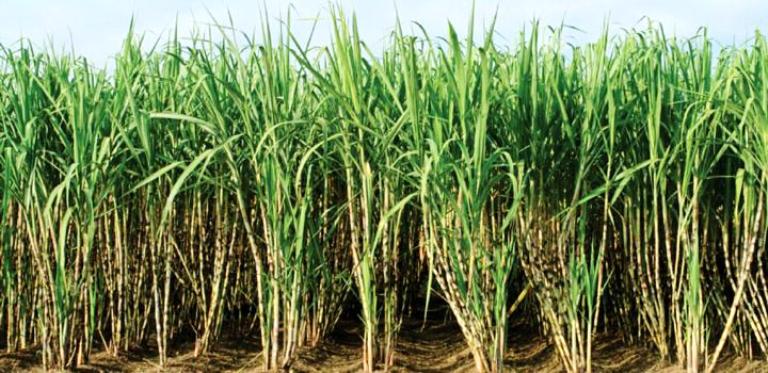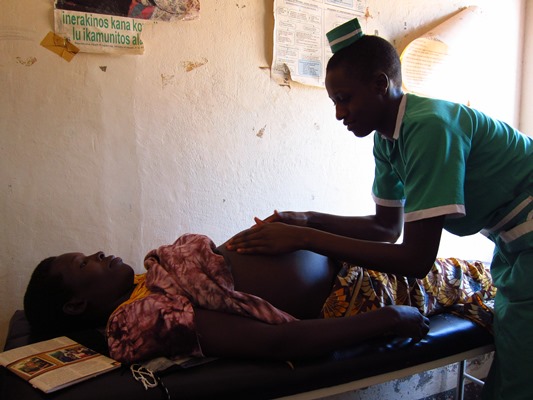OFFICIAL ADDRESS
BY
H.E. YOWERI KAGUTA MUSEVENI
PRESIDENT OF THE REPUBLIC OF UGANDA AND CHAIRPERSON OF THE SUMMIT OF THE EAC HEADS OF STATE
DURING THE OFFICIAL OPENING OF THE JOINT EAC HEADS OF STATE RETREAT ON INFRASTRUCTURE AND HEALTH FINANCING AND DEVELOPMENT
22ND FEBRUARY, 2018
SPEKE RESORT MUNYONYO
KAMPALA, UGANDA
Excellencies Heads of State and Government
The Secretary General of the EAC and your Secretariat staff
Government Ministers and Officials
Distinguished Partners and Invited Guests
Ladies and Gentlemen
I welcome you all to this EAC Heads of State Retreat on Infrastructure and Health Financing as part of Development. On behalf of the Government and the people of Uganda, I extend a warm welcome to all of you and invite you to enjoy the hospitality of our Country.
Colleague Heads of State and invited guests, this Joint Retreat will serve two purposes – first, as the 4th Retreat on Infrastructure Development and Financing where we review progress on the implementation of the priority projects agreed upon in the 3rd Retreat held in November 2014. Secondly, as the 1st Retreat on Health Sector Financing and Development.
As at our previous Retreats, this is to say that we owe it to ourselves and the future generations to ensure that this region has efficient, interlinked and interoperable infrastructure to enable our People to increase their prosperity through the exchange of goods and services. The greater the volume of goods and services that the East Africans sell to one another and to others, the greater their wealth is.
We are, here, also to consider the regional health sector investment priorities in line with our commitments to achieve a robust health coverage and healthy lives for the people of East Africa.
Excellencies,
I wish to thank you for taking decisive actions jointly and severally during the intervening period which has enabled the implementation of some of the infrastructure projects prioritized at the previous Retreats. Your commitments as Heads of State in this process provided requisite assurance not only to development partners and investors but also implementing agencies to propel the infrastructure agenda forward. I wish to thank all those partners that are supporting the regional infrastructure development initiatives in different ways.
Allow me to cite a few notable major ongoing infrastructure developments in the Region: the implementation of the flagship Standard Gauge Railways (SGR) of which the construction of the Mombasa – Nairobi section in the Northern Corridor is complete and operational while the construction of the Dar es Salaam – Morogoro – Mwanza – Dodoma on the Central Corridor is ongoing. Other major undertakings are: construction of the East African Crude Oil Pipeline, the development of Lamu Port – South Sudan – Ethiopia Transport Project corridor, among others.
Within Uganda, we are getting ready to, first of all, repair and start using the old railway lines to Malaba from Kampala, to Pakwach from Tororo and to Kasese from Kampala. Even using the old line to Mombasa, is cheaper than using the road. With the Standard Gauge now in Nairobi, it costs US$5 cents per metric tonne transported on the railway compared to US$ 15 cents per metric tonne transported on the road. With the completed Standard Gauge Railway the rail transport will cost US$ 8 cents per metric tonne compared to US$ 21 cents per metric tonne on the road. There is also the use of the Lakes: Victoria (Nalubaale), Kyooga with the Nile, Lake Albert (Mwitanzigye), Lake Edward (Butuumbi – Rutshuru) and the River Kagyera, through Kyaaka in Tanzania to Nshungyeezi in Uganda, a mere 30 miles short of the Rwanda border at Kakitumba.
However, when we are dealing with the Railway, Electricity and ICT backbone, we must ensure the final price of the utility is competitive because those elements are dangerous cost-pushers. High electricity, transport and internet costs will not allow us to industrialize. Therefore, the cost of money and the structure of ownership should never be allowed to interfere with this strategic aim.
The Region is also moving forward on trade facilitation through the harmonization of Vehicle Load Control and operationalization of the One Stop Border Posts. We will open yet another crucial boarder post of Busia on Saturday, as planned by our Regional Ministries.
We have also made good strides on the EAC One Area Network as the implementation of cross-border ICT infrastructure is critical for the attainment of a unified market in communication services in East Africa. I am gratified to note that Kenya, Rwanda and Uganda have implemented the EAC Roaming Framework, which has considerably reduced on the telecommunication charges for the East African citizens. I urge all the Partner States to embrace this initiative for the benefit of our people.
The transformation of the EAC Customs Union into the Single Customs Territory was a major step in advancing the integration agenda. The Community has, since January 2014, incrementally rolled our cargo on the Single Customs Territory. I am happy to report that in December, 2017, all goods were rolled into the Single Customs Territory. Thus, all goods are entered into the Single Customs Territory once they reach the first point of entry into the Community with taxes being assessed and paid to the destination Partner States.
I call upon Your Excellencies to continue on the path of connecting our region and internal investment in infrastructure to boost the facilitation of production and productivity. While the rest of Africa continue to register slow growth, EAC is the fastest growing region. This is partly due to solving this bottleneck of communication by investing heavily in infrastructure.
I would like to also request all partner states to focus on to the challenge of doing business in order to realize value for money for the investments we make in infrastructure.
I wish to mention some of the challenges, like, delays in project delivery caused by procurement challenges. As Heads of State, we agreed on the priority projects across the region but we do not have in place a harmonized approach of procuring for these projects. This is an area that we must address, collectively.
Excellencies, ladies and gentlemen, whereas developed countries anchor their infrastructure development on their strong financial and capital markets, this region lacks such muscle and, hence, miss the opportunity to access sufficient and cheaper capital. Infrastructure bonds issued through vibrant financial markets have become feasible and profitable investment portfolios for emerging countries in South East Asia. We need to embrace this approach in our Region as part of our strategy to enable us realize our long-term Infrastructure Development goals.
Let me inform you that, in the Health Sector, the EAC has witnessed a notable increase in life expectancy from 51 years in 2005 to 61 years in 2016. Despite this progress, huge public health challenges still exist. There is a growing burden of non-communicable diseases such as high blood pressure, diabetes and cancers; high prevalence of communicable diseases such as HIV/AIDS, Malaria and Tuberculosis; maternal, neonatal and nutritional complications; road and other accident related injuries; epidemics such as Ebola, marburg and even resistance to antibiotics.
In East Africa, we need to learn lessons from the outbreak of Ebola that ravaged West Africa from 2014 to 2016 in which over 11,000 people perished, but also investment, production and travel were severely disrupted. Such outbreaks overstretch the health systems and resources, threaten trade and slow down the overall socio-economic transformation. We, as a region, need to strengthen the rapid response mechanisms against health security threats.
With the current array of technologies at our disposal, there is no reason why we cannot eliminate some of the public health challenges such as Malaria, Tuberculosis, HIV and AIDS; preventable maternal and child deaths. We are also better equipped to deal with non-communicable diseases and epidemics.
We must, therefore, deliberately refocus our efforts to address these challenges through increasing investment in prevention, human and technological resources to accelerate progress towards universal coverage of essential health to the peoples of East Africa.
As we commit ourselves as leaders to champion the health agenda, I call upon investors and development partners to take advantage of potential investment opportunities such as the high unmet needs for specialized healthcare of the rapidly growing population; growing middle class and a wide range of potential incentives offered by Partner States.
Besides, ensuring healthy lives, we expect the health sector to contribute more significantly to the economy through creation of new jobs, proliferation of innovations, expansion of manufacturing of medicines and health technologies and medical tourism. The sector should be a foreign exchange earner to the region.
In this regard, we need to learn and apply lessons from emerging economies such as India, whose total healthcare industry revenue is expected to increase from US$ 110 billion in 2016 to US$ 372 billion in 2022 in response to deliberate investments in telemedicine, manufacturing of medicines and health technologies, medical tourism, health workforce training and risk pooling/health insurance, among others. In order to achieve this, we need to plan in a harmonized way. In Uganda, for instance, we, indeed, have a nascent pharmaceutical industry producing Aids/HIV, Malaria, Hepatitis-B, pharmaceuticals, etc. drugs. These are, however, still using imported pharmaceutical grade starch and imported pharmaceutical grade sugar. The pharmaceutical grade starch and sugar are crucial for making tablets and syrups for children’s medicines. Yet, the starch is from maize and cassava and the pharmaceutical grade sugar is from sugar. I am told the drugs would be 20% cheaper. Moreover, apart from helping in the pharmaceutical industry, more refined sugar is also needed in the soft drinks industry. Uganda is squandering US$34 million per year importing refined sugar for the soft drinks, about US$ 20 million for importing the pharmaceutical grade starches not including the other raw materials, US$ 77million for taking patients to India etc. Africa is incredibly rich but wasteful.
Excellencies,
It is my sincere hope that the outcomes of the Roundtable reports which will be presented to the Heads of State will provide avenues and strategies for addressing infrastructure and public health challenges in our region.
At this juncture, I urge all governments and partners to re-affirm their commitment to strengthen infrastructure and health sectors to accelerate attainment of overall socio-economic transformation for the peoples of East Africa. I look forward to your fruitful deliberations.
It is now my singular honor and privilege to declare this EAC Heads of State Retreat on Infrastructure and Health Financing and Development officially open.
Thank You All and Asanteni Sana!





